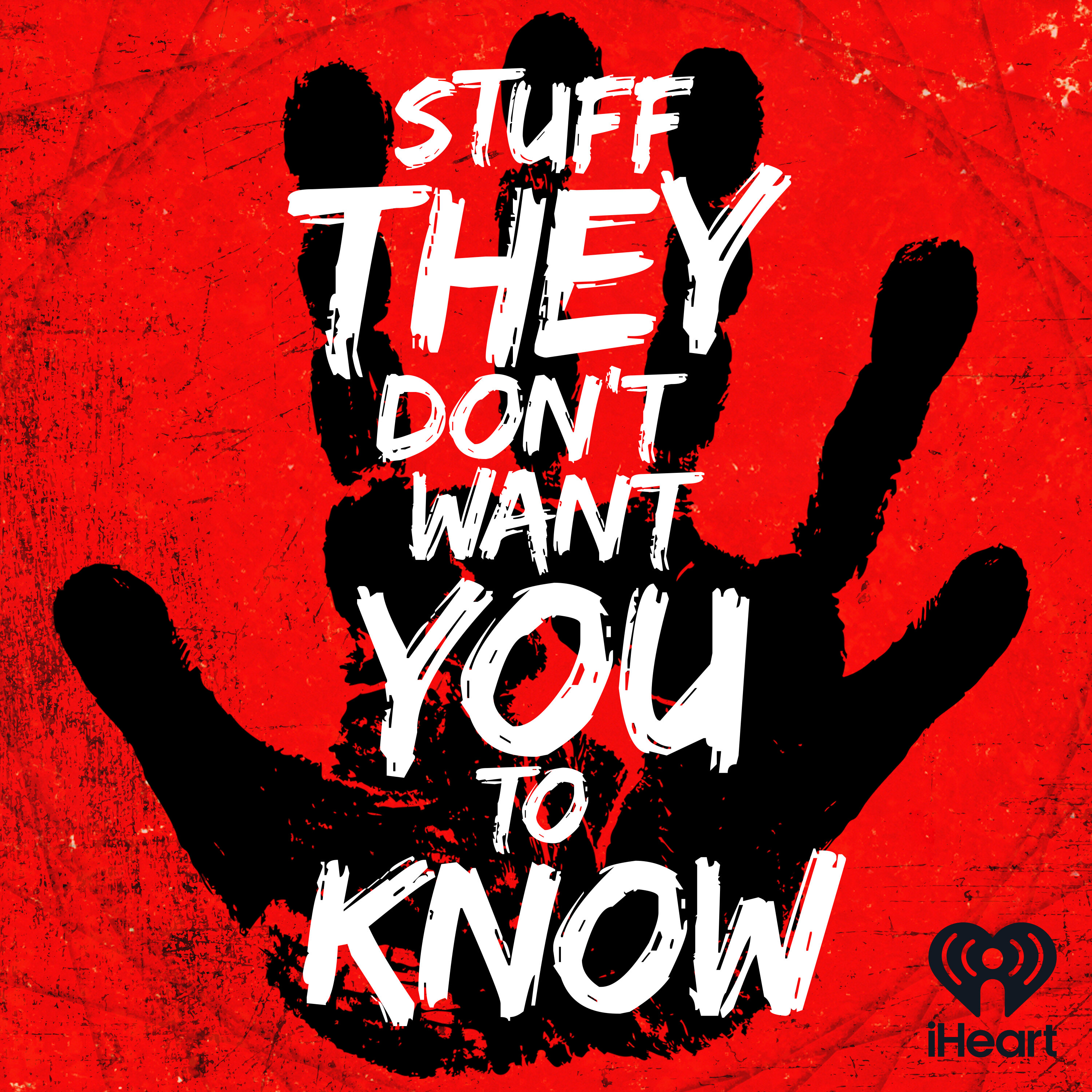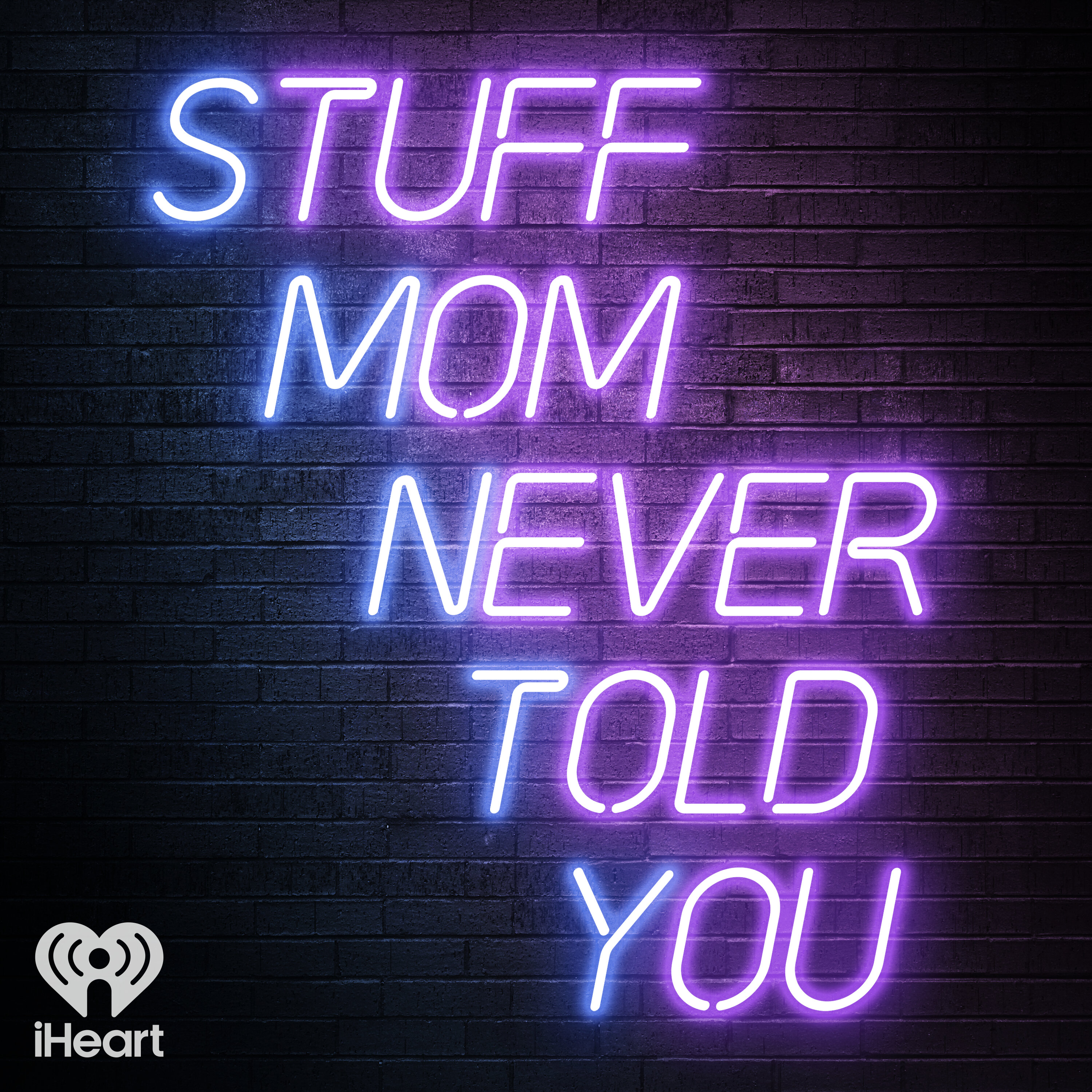
When Life Gives You Lemons
We do a bit of Research into handicapped travel issues and provide some solutions. Mobility, Hearing, Sight, Mental issues included. so far our episodes have included some information on Ataxia, Cerebral Palsy, Deafness, Dancing Sickness, Gulf War Syndrome, Long Covid and Wheelchairs. We are both Disability Advocates and realize there are too many diseases and conditions to cover and try to discuss the most common problems disabled people face and spread some awareness of disabled issues non-disabled people are unaware of.
CORRECTION
On a Previous episode I described how to enter our End Of Season contest. Step 1 click on the support our show link. Step 1 we require a one time payment (This has changed during our season) of $3. Step 3 (get you back to a one time payment) click on the $3 Subscription button. The following business day cancel the subscription (if you do it same day your bank may start thinking FRAUD. Step 4 Your done. Thanks for entering and "may the odds be forever in your favor",
When Life Gives You Lemons
Navigating Financial Markets with Disabilities: Smart Investment Strategies for Everyone
Money matters can be overwhelming for everyone, but for those navigating life with a disability, financial markets often seem doubly intimidating. What happens to your benefits if you start investing? Is trading even accessible? Can you practice without risking real money?
Today we tackle these questions head-on with practical, straightforward advice from disability advocates who understand both sides of the equation. The good news? Social Security offers a six-month grace period before investment income affects your benefits, giving you time to test trading strategies risk-free. We walk through completely free paper trading options through apps like Webull and Robinhood that let you practice with virtual money before putting a single real dollar at stake.
Beyond the basics, we explore how to read market movements, understand stock offerings, interpret financial news, and recognize market corrections versus true crashes. For the more adventurous, we even discuss advanced options like prop firms that provide trading capital to qualified individuals. Throughout the conversation runs a realistic thread – trading isn't for everyone's personality, and that's perfectly okay. The emotional rollercoaster of watching investments rise and fall isn't suitable for every temperament.
Whether you're curious about dipping your toe into penny stocks or simply want to understand how financial markets work from a disability-conscious perspective, this episode provides a judgment-free roadmap to start your journey. Have questions after listening? Reach out through our website, and we'll connect you with expert advice tailored to your situation.
Welcome to our podcast. When Life Gives you Limits, I'm Kevin.
Speaker 2:And I'm Palmy. We consider ourselves disability advocates and intend to spotlight some disability issues and things we find interesting that we frequently encounter when we're out and about. Also some history on disability that we find interesting history on disability that we find interesting.
Speaker 1:I can't see if you won't lose your benefits either way. If you start making you know decent amount of money via the stock market or any financial way, social Security gives you a six-month grace period to make sure it's going to work out before it affects your benefits. Any other uh agency you get benefits from you have to check with because I don't know each and every one of them. Yeah.
Speaker 3:Good enough.
Speaker 1:Okay, Paul. Okay, let's go back to Webull. That's an app. Is that free as well? It is free. Yes, so basically, you're using a free app to make free trades. Yes, paper trades.
Speaker 3:It's completely free, it doesn't cost anything. It's an app in your free app to make free trades. Yes, paper trades. It's completely free, doesn't cost anything. It's an app in your phone, you know. You can get it on your. You can go to the website on your computer and, uh, you just go in and, uh, the paper trade. I don't believe you have to put a bank account or anything in there. You do have to put your information in there, but I don't think you have to put a bank account to it just to pay per trade on there.
Speaker 3:It's set up where at the top of the page it'll say that it'll give you the top gainers of the day. So you can go in and and click on that and it'll scroll down all the stocks that day that are making the most money in the market and you can click on one of those and pay for trade that stock and see how you do with it. You know it will do the top market. It also will give you the top losers of the day on there too. But it would say like, if you get in there early, the stock market our time opens at 830. But you can trade in the pre-market before the market opens and on Robinhood, that is 6 am, and on Robinhood, that is 6 am.
Speaker 3:On Weeble I believe it's 4 am that you can start trading. You can go in there and click on that banner at the top and it'll say pre-market top gainers and you can go in there and there's a lot of penny. Now it won't all be penny stocks, but there are a lot of penny stocks in there too. You just scroll through and you'll see stocks for seven cents, five cents. You'll see stocks for three hundred dollars, but you just scroll through and you can find any price point that you you would be comfortable with trying to trade and just paper trade that stock and see how well you do. And do that for a few months and get used to it and see how well you do before you start using real money.
Speaker 1:Okay, you mentioned that Robinhood was free. Did they charge for your trades or anything?
Speaker 3:like that yes, they all charge for your trades or anything. Yes, they all trade, they all charge for your trades, but it's not much. I mean it's uh, you won't even notice it. I mean now cryptocom, if you, if you wanted to get in strictly into crypto. There's a lot of a lot of cryptos on cryptocom, but cryptocom charges quite a bit per trade and and when you say quite a bit, can you?
Speaker 3:okay, I sold all apart. Oh well, I sold a thousand dollars worth of shibu stock on there two years ago and it cost me 120 bucks to to sell it wow but robin hood's nothing like that robin hood.
Speaker 3:Actually, I think how robin hood works is they don't charge you until you pull your money out. I think you can make all the trades you want free, but I think, when you pull your money out is they'll take a small fee off of it, but it's nothing like that. I mean, it's maybe, you know, a few dollars compared, but, uh, I haven't taken any money off during a long time, so I don't, I don don't know. I tried trying to build my account up, so I've left my money in there for now. But, yeah, I would really recommend people paper trade before they try going in the market. And you might find there's a lot of apps out there. You know Robinhood's not for you. Charles Schwab has a very friendly app and they have what they call Think or Swim app that goes along with Charles Schwab and you can pay per trade on that one also and it will give you the daily news on there. You know also, and it it will give you the daily news on there. You know that's.
Speaker 3:Another thing about trading is if a stock has news come out that day and it's good news, chances are that stock is going to do well. So, uh, you can go to yahoo finance, you can go to cnbc finance, you can go to cnbc app and you can see all this news. You know you can read the news and, uh, and there's apps that you can. You know, there again, that costs money, but there's apps you can download. You'll get the news before anybody else. But on, we will. If you click on a stock let's say, the number one gainer of the day is 11 cent stock and you think, okay, this might be what I want to get into Well, click on that stock and at the top it will it'll have another banner and it'll say news and then it'll have a new and then I have a feed where people are talking about that stock. But click on that news and if that stock has news out that day, then there's a good chance that stock's going to do good, which of course, the news has to be good news.
Speaker 3:If the stock is coming out with an offering, you don't want anything to do with that because that means that that stock's going to drop. So an offering means they're going to add shares to their portfolio. So if you have 100 shares of that stock and then they go and they however many shares that company has of that stock. Let's say they double their shares. They make an offering, they double your shares. Well, your stock just came worth half of what it did it did was worth. So if you had 100 shares and it was worth a hundred dollars, well, you still have 100 shares. But now, since they made an offering and they doubled the amount of shares that came out in the company, now your stock's only worth fifty dollars. You know, does that make sense?
Speaker 2:you know.
Speaker 3:So you want to stay away from any, any news where a company is saying they're coming out with an offering. Unfortunately, some some companies don't warn you about that. I took a big hit a few weeks ago on that. I was in a day trade and I was up over $200 on this stock and within a matter of seconds I was down $175, and there wasn't nothing I could do about it. I just had to get out of it because they came out with an offering and their price of their stock went down.
Speaker 3:It doesn't happen very often. I mean, I've been doing this well, day trading, I've been doing that for two years, crypto and everything. I've been doing it since before the pandemic, and that's the only time it's ever happened to me. So I don't want people to think, oh, that's something that happens all the time. It does happen all the time, but chances of it happening to you all the time is pretty rare. I mean there's how many stocks is there on the stock market? I mean it's a crazy amount. I mean it's a crazy amount and for you to have that happen to you more than once, then it's pretty rare, you know.
Speaker 1:It's like somewhere along the lines of being struck by lightning twice.
Speaker 3:Kind of, kind of. But you also got to know what to look for. Like I said, you know I only try to trade stocks that has news behind it. That way I know why it's going up and why it's not. You know, china likes to come out with these new IPOs, which is a new stock. They'll form some company with two people in it and they'll throw a new, some company with two people in it and they'll throw they'll throw a new ipo on the market and they'll they'll put a bunch of money into this stock to get people to come to it.
Speaker 3:And I've seen these things go from four dollars all the way up to $3,000 or $4,000. I mean not lately, that was back in pandemic days but it's nothing for them to go up to $100, $150. And it's easy to get wrapped up into that stuff, because I was for a while trying to chase that. You know that big win. But the problem with them things are most of the time 99 of the time they're going to spike real high and then they're going to give it all back within within minutes and for one of them to break out and go like that is very rare. I mean very rare, and those are another one you have to be careful with, you know, because you want to chase one of them. You, you're watching it and you see it started out that morning at three dollars and you know it's at thirty dollars now. Oh man, I gotta get in this. Well, that's strong time to get in one when it's already up to three hundred percent. That's a strong time to get in one when it's already up 200% or 300%.
Speaker 3:That's not the time you want to get into a stock. You want to get in a stock as low as possible. You want to be the first guy to get in that stock. You want to end that stock when it's at $6, not when it's at $30. And those stocks will always pull back at some point too. Those stocks will always pull back at some point too.
Speaker 3:And you know, buying a dip buy on a stock, that's where a stock a spike like that then it starts giving back and it gets back down to the support line, which is where is usually a previous high on that stock. You know that's usually where the support line will be. That's where, if you're going to get into a stock that's already spiked, that's what you're looking for. Is that first dip buy. When it comes back down to the support line, then you want to get in it for that next wave up. Like I said, that's all part of day trading. You know, if you're looking to do a long-term investment, it's really hard to do with penny stocks, I mean because most of them just do not hold their gains.
Speaker 1:I've always heard that one of the safest investments are bonds.
Speaker 3:They are Right they are. And why do you think all the you know Wall Street's made up of? Most of the wealth on Wall Street is like the top 18% of the people trading it. And when the market crashed Friday, where do you think all those wealthy people put their money?
Speaker 1:In bonds.
Speaker 3:They put them in bonds and they took it out of the market and they put it in bonds to wait until this market corrects itself, which the market's in a correction mode right now. There's nothing really for anybody to panic with, really for anybody to panic with. You know, if you, if your 401ks are looking bad right now, is there's there's really no reason to panic just yet because the market is in a correction mode. The market has been going nuts. S&p 500 you know it was so overextended. You know it was up over $600, and it was so overextended that it had to come back down. So as long as we stay above, I'd say, $450, $460 on the S&P 500, we're going to be fine. We're going to bounce back and everything's going to be fine. This you know. We're going to bounce back and everything's going to be fine.
Speaker 3:If that, if that goes below that, we look like we could slip into a recession. But if we do slip into a recession, I think it's going to be short-lived, I don't think it's going to be long. So, getting back to those bonds, what's the government do with bonds? Government takes the interest that they get off of these bonds and they pay bills with it. If these rich people are putting their money into bonds right now, then that means our government is going to be able to pull the interest rates off of these bonds and possibly pay down some of our debt, maybe help fund some programs that need program, you know, help funding maybe Social Security, whatever it may be, and that's not a bad thing. It all kind of works hand in hand with one another. So I think the next two or three months is going to be very telling of what happens, you know, in our market.
Speaker 3:But right now I don't think there's any reason to panic whatsoever. I think that we're just in a correction mode and a people have a little bit of extra money, you know to invest in the market. You know now's the time to do it, because it's a historic lows and that's when you want to get into the market is when something's low. If you do have a little bit of extra money and you don't know how to invest it, I suggest talking to you know a broker, you know a stock broker, you broker a retirement broker and see what they have to say. But if you're just $20 or $30 here, I would really look into a Roth IRA or something, because that's your safest bet. But if you just want to play in the market, then I would learn all I could about it before I put real money into it.
Speaker 1:Yeah, for sure, there's a lot of knowledge to be had out there with internet, knowledge to be had out there with you, and that it's just like a scientific data or the studies you do. There can always be bias when you listen to somebody else's opinion. Yeah, you have to just figure out what that bias is. You, you know.
Speaker 3:Do your research.
Speaker 3:I mean that's the biggest thing I can tell people is to do your research and come to your own conclusions of what is best for you. I don't want anybody taking financial advice from me. I'm just here trying to give you some options of what to look at and how to go about it, but I would never recommend any stock to anybody. I would never recommend you put money into stock. I wouldn't recommend you put money into crypto. I'm just saying I'm giving you the options of what I would do, you know, or what I do do.
Speaker 1:I don't think stock trading, whether it be penny stocks or crypto, is like for everybody no I don't have the uh sort of personality to you know. Make that work, I'm too cheap.
Speaker 3:You gotta have nerves, and it's too cheap I chicken out before I would make money and you know it didn't freak out when I didn't so it's definitely it plays on your emotions.
Speaker 3:You know, that day I lost 175 dollars. My heart was broken. But but you know, the next day I made it back and I was on cloud nine. I mean, it was just a rush like you wouldn't believe. But you know, unfortunately there's been more of those lost days and you know, it seems like my losses are a lot bigger than my wins sometimes. But I'm getting there. I mean it's all a work in progress. I mean I uh, it's uh. There's another thing. I we didn't talk about this before we got time to go over something else here.
Speaker 3:Sure, if you do get in to stock trading and you find that you have a niche for this and you think that you can make money at this and say you do make money, but you just don't really have the money to invest in it, to really fund your account the way you want to invest in it, to really fund your account the way you want, there are companies out there. They're prop firms and what they do is you can buy an account from them. You spend your real money and you buy an account from them, account from them and you have to pass a test depending on how big of a account you want. They go from $10,000 all the way up to $200,000. So you can get in. You can get into one of these $10,000 accounts for under $100. So what you'll have to do is you'll have to make $10,000 in the market before you lose $10,000. If you lose $10,000, then you've lost your money, you've lost everything. You had to refund the account, and if you had to refund the account the next time, it costs more so.
Speaker 3:But the good side is, if you get funded, then they give you real money because you're paper trading on the test, and this isn't penny stocks. This is, this is s&p 500 stocks. These are blue chip stocks you'll be trading. So you go in and you get funded. Well then you, the first three withdrawals you can make off of there will be $1,000 apiece. If you make that much, you have to be able to make that money, but you'll get funded 100% of that $1,000. Then after that, you can pull off however much you want.
Speaker 3:If you make $20,000, you can pull off however much you want. If you make twenty thousand dollars, you can pull off that twenty thousand dollars, but they get ten percent of that. You'll get 90 and they'll get 10, and you can. Only you'll have the way it's set up you can only pull money off of it every 14 days. Up is you can only pull money off of it every 14 days and you have to make at least six trades of 50 or more one way or the other, loss or gain in those in those 14 days. So now these firms are set up to make money. So the guy that I follow has been in the stock market for years. He's 31 years old, he's a self-made millionaire and the first two prop firm attempts that he made he failed both of them.
Speaker 3:So I don't want people to think you know this is easy money because it's not. So I don't want people to think this is easy money because it's not. I'm doing one right now and I've not failed out of it yet, but I'm getting close. I bet on the S&P 500 yesterday or Friday to bounce back up and I didn't make it. So if I was shorted to the S&P 500 yesterday instead of betting on it to go up, then I'd have been sitting all right, but that is an option. But I only suggest you even look into this after you're familiar with the market and you've been doing it for a long time and you feel comfortable that you can make money in the market Right.
Speaker 1:But it is an option. Our discussion so far, the freest, cheapest and best option to start with is going with paper trades. Get a feel for what you're doing.
Speaker 3:Yes, absolutely.
Speaker 1:The app is free and the trades you're making you're using fake money for it. So it you know it's like playing a video game, if you will, it's just right entertainment, education, whatever it's kind of like playing monopoly right then perhaps, if you decide this is something you want to do, you want to look at Robinhood.
Speaker 3:Yes.
Speaker 1:And then you can start trading. Is there anything you can't trade on Robinhood?
Speaker 3:Well, there is some penny stocks that Robinhood won't have on there, I mean, but for the most part, robin hood has everything. Now crypto they're limited to what they have on crypto. You know they do have the basics of crypto, but but they don't have a lot of crypto on there. But, uh, no, you can. You can trade just about anything on there. I mean, uh, and the thing about robin hood that's good, why I say it's good for beginners most of these apps they have a buy and ask.
Speaker 3:When you're trading and you have to put in a price to what you want to buy the stock at. Let's say the stock is, let's say the ask is three dollars and the buy is two 289 or whatever. Well, you have to decide somewhere between those two where you want to buy. On Robinhood, you don't have to do that. On Robinhood, you click on the ticker, you pull up the stock, you hit buy, you punch in how many shares you want and then you just swipe up and it buys it for you. You don't have to worry about putting in any price, but now it buys at the price you can watch. Whenever you set everything up, you can sit there and watch the stock and you can watch it, move the price on it. So you can say, okay, you know the stock's at $1.49, you know, but it went down to $1.46. Well, you can keep watching it. Maybe it goes down to dollar 46. Well, you can keep watching it, maybe it goes down to a dollar 40 or whatever. Then you can swap. You know you can swipe up and get a cheaper price on it. On the other hand, you can go on there and it could be going running away the other way. So you know, but the good thing is you don't have to put a price in, you just swipe it up and you buy it. Now you can do limit orders and all that, but that's I think that would be for another lesson. I mean, you know there is ways that you can set a price on Robin Hood, but you know it's a little more technical and I don't think today would be a real good way to get into it, you know. But but for the most part any beginner can buy on, tick on on Robin Hood. All you gotta do is just swipe up.
Speaker 3:After you put your price in and how many stocks you want, you're good to go and you sell it the same way you go in, you can sell part, partial. Say, you buy a hundred shares and you only want to sell 50. You can go in, punch in 50 shares, swipe up and you've sold them. Or there's a button there to say sell all shares. You just click on that and it pulls all your shares up and then, when you get ready to sell, you just swipe up and it sells all your shares. And uh, so you buy in at a dollar 40 and 30 seconds later it's a dollar 60. You swipe up and you get out and you made 20 cents a share. You know, that's, that's on a good day, that's that's what I like doing, you know. But uh, yeah, it's. It's nothing like making a few hundred dollars in a 30 second time span. Then again, in 15 seconds I lost a $100, almost $200. So you know, it's nature of the beast, I mean.
Speaker 1:Well, paul, thanks for your expertise and I wish all of our listeners the best of luck if you're going to go out there. But by my alibi, Paul said it was to make money then to lose money all right, you know just if you got the sort of personality where you can deal with that sort of situation, great. If you don't, like me, I'm just too chicken to take the plunge into there.
Speaker 3:I totally understand. Well, I hope I was clear as mud to everybody. I just like to wish everybody luck that tries this and just be safe with your money and be smart. This and just be safe with your money and and be smart. You know, and I sure don't want to see anybody lose their money, but it'd be nice to see a few of you make a little bit of money.
Speaker 1:So yeah, what we do is, uh, you have the email address on our website, which is wwwwhenlifegivesyoulemonsnet. If you have questions or situations you'd like to discuss with Paul, I'll pass those over to him and that way you can get a little bit more than my guesstimation. You can get somebody who's got some educated guesses for you and perhaps answer some of your questions. Does that work for you?
Speaker 3:I'll be happy to help, if I can, you know.
Speaker 1:Okay, until next episode, take those lemons and make your own lemonade.
Podcasts we love
Check out these other fine podcasts recommended by us, not an algorithm.

When Life Gives You Lemons
Kevin & Palmi Henry
Stuff They Don't Want You To Know
iHeartPodcasts
Stuff Mom Never Told You
iHeartPodcasts
Stuff You Missed in History Class
iHeartPodcasts
Planet Money
NPR
Ridiculous History
iHeartPodcasts
The Way I Heard It with Mike Rowe
The Way I Heard It with Mike Rowe




